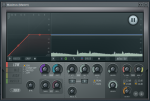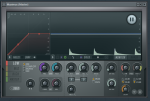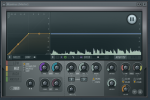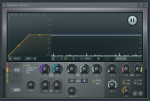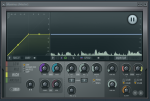CheckYourHead2727
New member
Lets focus on frequency spread vs. volume that is my learning goal for this post. Post 1 (of 3).
So I compared a snippet of a trap beat I made with a professional trap beat Gucci Man Still Selling Dope Prod. By Metro Boomin.
Here is Metro Youtube:
Track Notes:
I am Using Fl Studio.
I turned the Metro Beat down so it was peaking at -12db.
I programmed my percussion and programmed my beat in the sequencer.
I turned output volume waaaay down on my monitors so I could hear what was loudest and compared the result with the Metro Beat.
I found a balance I liked on the faders.
I turned the monitors up to check the bass at high volume adjusted the 808 Volume.
Did a little panning of hats and melodic elements.
I added a touch or reverb and delay to the melodic elements.
Rolled off a bit high fizz on the melody synth.
That's it I did nothing else.
My beat is peaking at -12db just like the reference track by Metro.
Here is my beat:
I used Voxengo Span a free frequency analyzer vst which can be downloaded here to compare the tracks.
Real-time audio spectrum analyzer plugin (AU, VST) - Voxengo SPAN - Voxengo
First the Reference Track by Metro(remember this is turned down to be peaking at -12db on fl Mixer meter):
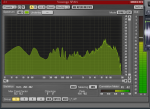
Nice even frequency spread right?
Ok here is My Track (peaking at -12db)
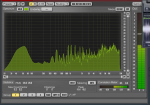
seems like a huge bass spike right? Well guess what that bass spike is actually 5db quieter than the reference track by Metro. I cant turn it up any louder with out exceeding are artificial peak of -12db on the whole track. And you know what the track sounds like it has plenty of bass already.
As I listen my track lacks mid and high energy too.
I will analyze that in the next post below.
So I compared a snippet of a trap beat I made with a professional trap beat Gucci Man Still Selling Dope Prod. By Metro Boomin.
Here is Metro Youtube:
Track Notes:
I am Using Fl Studio.
I turned the Metro Beat down so it was peaking at -12db.
I programmed my percussion and programmed my beat in the sequencer.
I turned output volume waaaay down on my monitors so I could hear what was loudest and compared the result with the Metro Beat.
I found a balance I liked on the faders.
I turned the monitors up to check the bass at high volume adjusted the 808 Volume.
Did a little panning of hats and melodic elements.
I added a touch or reverb and delay to the melodic elements.
Rolled off a bit high fizz on the melody synth.
That's it I did nothing else.
My beat is peaking at -12db just like the reference track by Metro.
Here is my beat:
I used Voxengo Span a free frequency analyzer vst which can be downloaded here to compare the tracks.
Real-time audio spectrum analyzer plugin (AU, VST) - Voxengo SPAN - Voxengo
First the Reference Track by Metro(remember this is turned down to be peaking at -12db on fl Mixer meter):

Nice even frequency spread right?
Ok here is My Track (peaking at -12db)

seems like a huge bass spike right? Well guess what that bass spike is actually 5db quieter than the reference track by Metro. I cant turn it up any louder with out exceeding are artificial peak of -12db on the whole track. And you know what the track sounds like it has plenty of bass already.
As I listen my track lacks mid and high energy too.
I will analyze that in the next post below.

